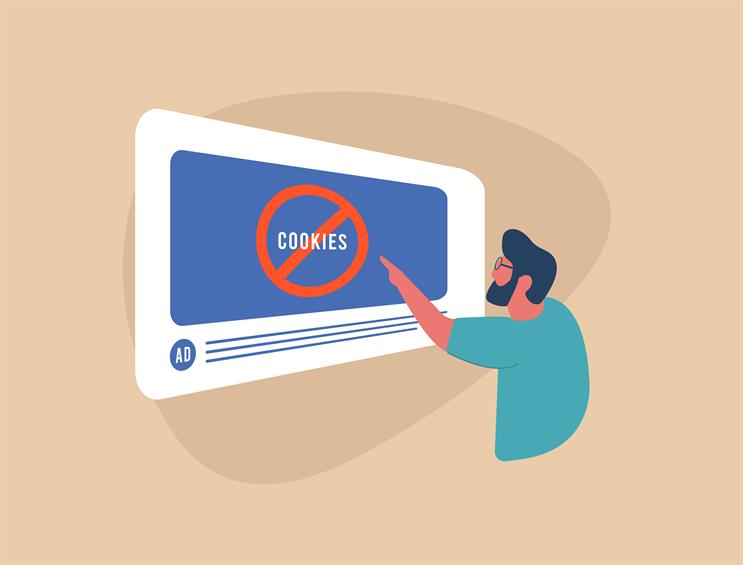
The cookieless future remains uncertain, but the reality for brands is that embracing audience-based, real-time contextual solutions in an increasingly fragmented landscape will provide improved targeting and measurement.
.jpg)
“Cookies have been an easy shortcut,” explains Amelia Waddington, chief product officer of Captify, the largest holder of onsite search data from the open web. “But the idea that everything was traceable and measurable has never been true, because ultimately a cookie isn’t an individual.”
Captify’s new brand campaign, ‘Shift Happens’, highlights the challenges marketers are facing today. With consumer intent constantly shifting, and the impending deprecation of third party cookies, it can be a real challenge for brands to keep up without a real-time audience strategy.
Intent x context = efficiency
Captify’s machine learning models have been trained for more than a decade, translating onsite search data into actionable intelligence for brands around the globe. Captify examines where searches are happening, the connection between searches made across the open web, as well as the content being consumed around those searches. “It hits that relationship between intent and context,” says Waddington. “What people are searching around to meet their needs or interests in that particular moment, when they have that intent.” It can be delivered as either a cookie-based, or a cookieless solution, which Capitfy can deliver either as a managed service, curated or self-serve through any DSP.
“I think people are starting to realise now that some of the newer solutions actually have greater scale than cookies, and are more persistent.”
In 2022, Captify saw a 46% increase in click-through rate (CTR) from cookieless vs cookie-based campaigns and a 40% decrease in cost per thousand (CPM). In 2023, the CTR was up to 83% while the CPM decrease stayed at 40%.
How TV ad buying is changing
Late last year Captify announced a partnership with ITV, enabling the broadcaster to leverage Captify’s advanced contextual classification technology to analyse a TV programme at four- or five-minute intervals, allowing advertisers to place an ad right after a super-relevant segment (aka priming). This is an industry-first activation that allows brands to have a deeper level of integration within all relevant genres within the program, not just one.
“TV is still bought in a very traditional way without a lot of the tech that we’re more familiar with in the digital space,” says Waddington. “We’ll definitely see more of the digital data-driven and technologically advanced ways of buying, selling and scheduling moving into linear TV.”
Why brands need to measure up for cookieless
Captify’s measurement offering, Search Lift Study, is based on the same onsite search data used to build their cookieless audiences enabling brands to measure behavioural impacts without the use of cookies.
Waddington urges brands to ensure they are well prepared for a cookieless world, even if it remains unclear when that precise moment will come. “When cookies go away, it’s going to be impossible to A/B test your tactics,” she explains. “And whether you’re bringing in new data, partners or measurement, you want to do that when you can compare and contrast, otherwise you’ll be flying blind.
“A lot of the conversation around cookieless has concerned activation, but measurement is potentially an even bigger challenge. Using real-time data and measuring search uplift can effectively give you the world’s largest panel.”
“While the exact timeline for Chrome's complete deprecation of third-party cookies remains uncertain, there is cause for optimism among brands that proactively prepare and explore alternative solutions. By embracing early testing, these brands stand to gain from innovative solutions that address the longstanding limitations of cookies in terms of strategy, activation and measurement.”
Case study: tapping into new audiences for Birra Moretti Zero
Heineken partnered with Captify to target a millennial audience with three key aims for its Birra Moretti Zero brand: increased consumption; aligning the brand with health-conscious consumers; and capturing intent for Dry January and Sober October.
Captify built a customised audience strategy to identify and reach Heineken’s target audiences, while also unearthing two hidden audiences: social media enthusiasts and beauty enthusiasts who both displayed an unexpected affinity for Moretti Zero. Captify helped Heineken engage these audiences at scale with dynamic video creatives, activating its search-powered contextual solution alongside cookie-enabled deals to test the performance and effectiveness of its cookieless offering.
The campaign overachieved against the KPIs of video completion rate (VCR) – 88% against 85% – and viewability, which was 81%, up 11% against the target. It also drove a 2.56x search uplift for Birra Moretti.
Cookieless deals proved more cost effective and drove a 23.5% higher CTR than cookie-enabled deals.
The unexpected ‘social media and beauty enthusiasts’ segments outperformed intuitive audiences and delivered 1.5m impressions. “The ability to unlock new audiences through intent data is extremely valuable for our planning and activation,” said Olya Dyachuk, Heineken’s data-driven media director.


